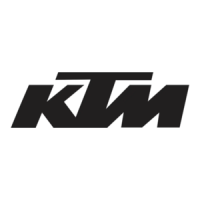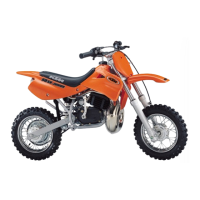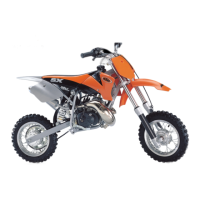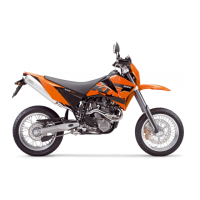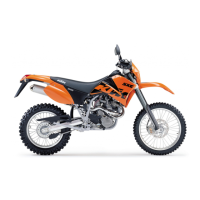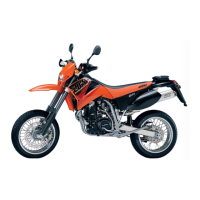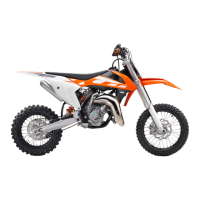Why won't my KTM 620 2001 engine reach full power?
- WWilliam JenkinsAug 18, 2025
If your KTM Motorcycle engine isn't reaching full power, several factors could be responsible. A partially interrupted fuel supply or a dirty carburetor could be the cause. In this case, you should clean and check the fuel system and carburetor. An additional cause could be that the float is not tight, or has no axial play. In this case, you should replace or abrade the float. A very dirty air filter may also be the reason, so clean or replace it. Finally, check the exhaust for leaks or blockages and replace the glass fiber yarn in the exhaust silencer if necessary.
